Festivals - Venice International Film Festival 2017 : Woodshock: Let’s talk with Laura and Kate Mulleavy
By Mulder, Venice, 16 september 2017
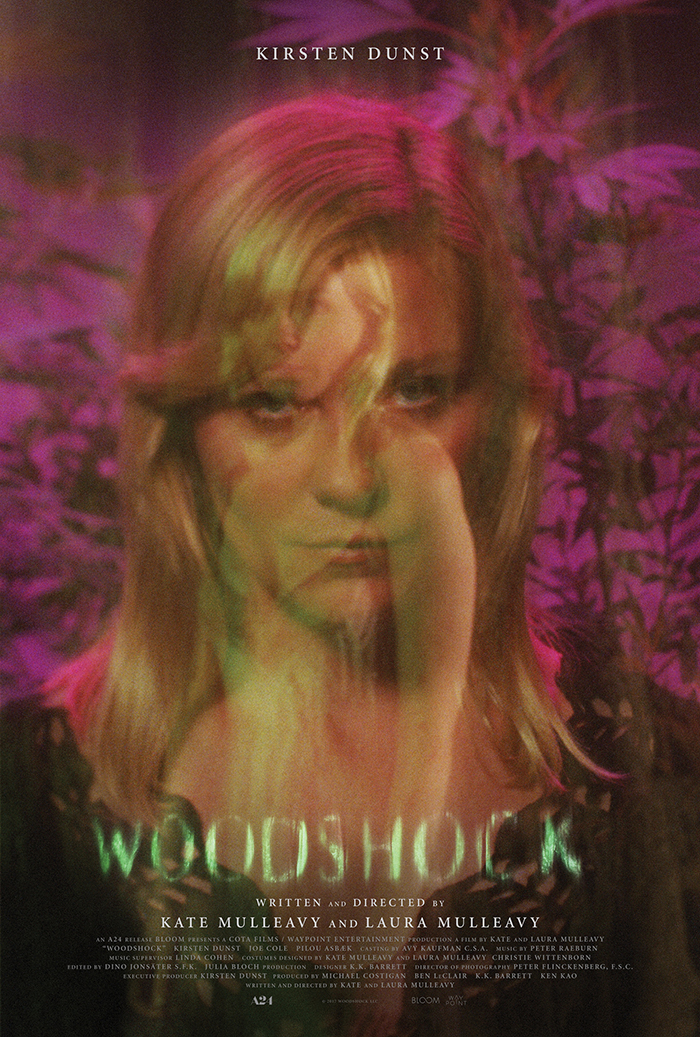
Kate and Laura Mulleavy (Directors, Writers, Costume Designers) are the awardwinning founders of Rodarte, a Los Angeles-based company established in 2005. Rodarte is known for its artistic mixture of high couture, California influences and explorations into other art forms. The Mulleavy sisters received a Broadcast Film Critics Award nomination for Best Costume Design for their work on Darren Aronofsky’s Black Swan. Rodarte is included in the permanent collections of the Costume Institute of the Metropolitan Museum of Art, the Boston Museum of Fine Art, the Los Angeles County Museum of Art and the Museum at FIT in New York. Their design and costume work has been featured in solo exhibitions at the Cooper-Hewitt National Design Museum (2010), the Museum of Contemporary Art, Los Angeles (2011) and the Los Angeles County Museum of Art (2011). In 2018 they have an exhibit at the National Museum for Women in the Arts. In 2010 the Mulleavys graduated with degrees in art history and English literature from the University of California, Berkeley.
Q: What made you decide to make a film? Why do it now and why this story?
Laura Mulleavy : There are certain steps you take in your life in order to get to where you want to go creatively. When you need to make something, you figure out a way of doing it. What else do you have to offer but a viewpoint that’s your own? Why make something like everyone else? Directing our first film was a chance to look deep inside and examine our personal perspective.
Q: What was your inspiration for this film?
Kate Mulleavy : We grew up in Santa Cruz, on the edge of an amazing old growth forest, where we were surrounded by spectacular redwood trees. All of our earliest memories are in relationship to those trees. The redwoods now only exist on one strip of land between Big Sur and the northern most tip of California. In the span of about 150 years, we managed to destroy 95 percent of the old growth forest. Growing up amongst those trees made us more sensitive to the fragility of life. We were children during a time when people were actively trying to preserve what was left of these trees. On an unconscious level, I think we absorbed a lot of what was happening.
Laura Mulleavy : Can you imagine that there was once a time when that destruction of the redwoods was a constant in people’s lives? If a tree was pulled down, you could feel the vibrations for miles. And it would be on the hour. When we started working on the story of Woodshock, we thought about this question: What are the psychological repercussions of this type of destruction in one’s environment? This idea of killing the earth you live on and what that can do to somebody. John Steinbeck wrote, “No one has ever successfully painted or photographed a redwood tree.” We wanted to make a film that could make you feel what it’s like to stand inside one of those forests. How do you convey how small they make you feel, how insignificant some of the things we do are, but how significant our destruction is, which is the undercurrent of the film.
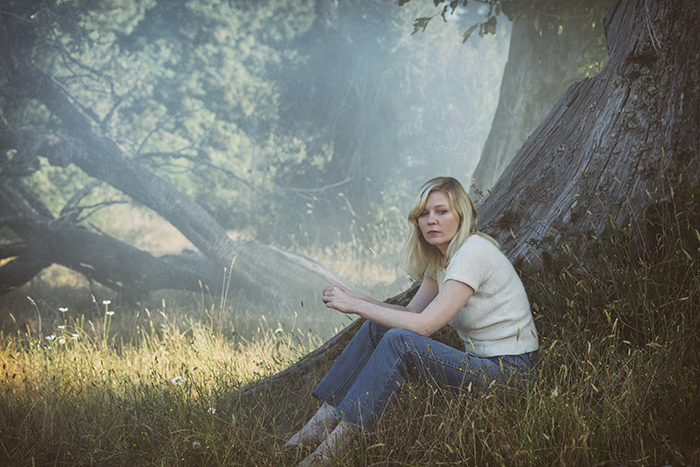
Q: What was the genesis of the story?
Kate Mulleavy : Laura and I became very interested in creating a story that hinges completely on the subjective experiences of the main character, Theresa. This subjectivity seemed critical in exploring the idea of her isolation and grief.
Laura Mulleavy : There’s an unstudied psychological condition called “woods shock” that sometimes happens when people get lost in the woods. They do irrational, chaotic things, like run in the wrong direction for a very long time when they know they should stay in one spot. They can trip and get scared and get hurt, which sometimes leads to their death. This idea of complete disorientation was really interesting. We wanted to show what happens when someone’s disoriented in his or her own life.
Kate Mulleavy : When we started writing this, we read a beautiful essay that makes the analogy that the deepest part of the human unconscious is related to the deepest green of the woods. As filmmakers, the idea of being lost in the woods became a way in which to explore Theresa’s psychological descent and mindscape.
Q: Kirsten Dunst plays the main character, Theresa, a young woman who works in a marijuana dispensary in Humboldt County. How did she get involved and what is it that she brings to the story and the character?
Laura Mulleavy : We wrote the role of Theresa imaging that Kirsten would play her, knowing that we needed an actress with such intense and poetic emotional range. From the very beginning, during the earliest stages of the writing process, we knew that Theresa could only be played by Kirsten.
Kate Mulleavy : It’s a very difficult role in that it requires an extreme physical and emotional transformation- one that is very nuanced and sublime. Kirsten is in every scene, and defines the emotional journey of the story and its psychological repercussions. Everything pivots on where she takes us. In a sense, she leads the viewer through the deepest part of her own self-discovery. Theresa’s internal exploration is the story and it takes an incredible actress to delve so deep into character, to create on such a primal level. Kirsten’s a complete emotional vessel and that’s really rare.
Laura Mulleavy : Kirsten hadn’t spent a lot of time in the redwoods. Her first experience amongst the largest of the trees on the planet was on our first pre-shoot day of filming. We thought we should take Kirsten into the woods, blindfolded. We caught her response on film and the footage was so emotionally raw and profound that we were able to use it in the opening sequence, which is centered around a life altering moment of loss that Theresa experiences. This is a beautiful example of Kirsten’s deep connection to the character — living, breathing, and dreaming as Theresa, and, at the same time illustrative of her openness and improvisation as an actress.
Kate Mulleavy : I remember watching her and realizing how powerful the opening sequence was going to be. It is so primal, a great act of human beauty and sacrifice, and it will ravage her. To see her interact with those trees captured that entire feeling for me.
Laura Mulleavy : Someone can watch from the first minute and by minute 20, if you asked them all the things that happened they would know, but they would not remember watching it. It is the combination of the score and the sound and the painterly nature of it…but it’s also Kirsten allowing us inside Theresa’s mind so that we can experience with her, instead of being passive viewers. There is no distance allowed. We get lost with Theresa as we delve deeper into her mental landscape.
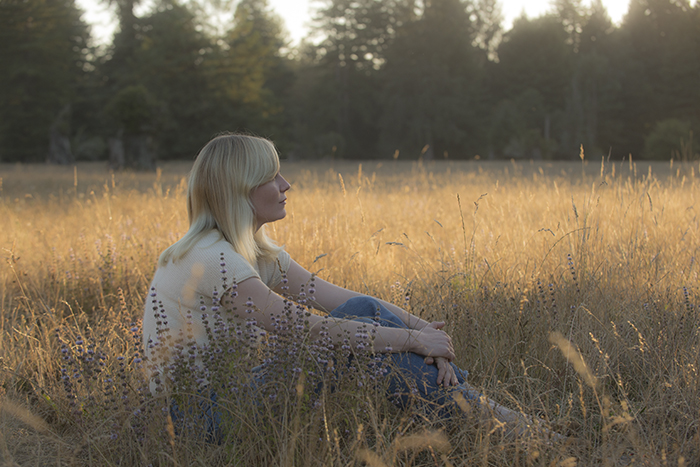
Q: Describe working with Kirsten on set.
Laura Mulleavy : Kirsten is just an incredible actor. Her process helped us filter out things that would not feel truthful to the character. I’m so grateful to have worked with someone so natural. It was just fun and moving to create with her. She sometimes referred to Theresa as a tree fairy, someone trapped in a human body. It was fascinating to watch what she discovered in the character.
Kate Mulleavy : She was able to take on the most oppressive emotions that this character was experiencing and communicate them with every ounce of her body. She goes through a hundred different emotions as you watch this film.
Laura Mulleavy : Kirsten has a natural form of acting. She blends into her landscape, but it takes a lot of work to get there. When you walk through her process, you realize it’s like studying for a dissertation. In our film, she effortlessly guides the viewer through a symbolic journey. It’s like in Greek mythology where you have the storyteller as your guide, but in a very abstract way.
Q: The cast also includes Danish actor Pilou Asbæk, Joel Cole and Jack Kilmer as the men in Theresa’s life. Who do they play and what do they mean to Theresa?
Laura Mulleavy : This was the first American film Pilou shot. Seeing him work with Kristen was so fascinating. He has that same natural way of working, and they had a partnership that was really powerful. Pilou inspired us daily with incredible improvisation and dynamics. Every scene we shot with Pilou was magical. He managed to capture the elusive charm of Keith. Keith’s motivation is never easy to read in a simplistic manner — his emotions
and intent are a mystery and yet, paradoxically, he seems so open and easy to read.
Kate Mulleavy : His character is the opposite of Theresa’s. Where she has the burden of trying to understand life in a deeper way, he’s without boundaries. He can go one way and then the other, never making the same decision or feeling like he is tied to anything.
Laura Mulleavy : Nick, who is played by Joe Cole, is Theresa’s boyfriend. Their relationship is fractured and they are extremely disconnected. Theresa’s inner world is not at all understood by him. Her truth is buried so deep that he cannot begin to access it. He is an outsider, a shadow in their own home. Joe did an amazing job in creating a character that could really emphasize Theresa’s isolation and psychological retreat inward, away from him. Johnny, Jack Kilmer’s character, is important because he shows her something that is innocent. He connects to Theresa for a flickering moment, a brief second. That one moment of connectivity with Johnny, at the party, is really important. It is a moment of hope, but it doesn’t last. Jack is a wonderful actor who brings so much ease to each scene; he is completely endearing and warm, and he connected so much with Kirsten when they were together.
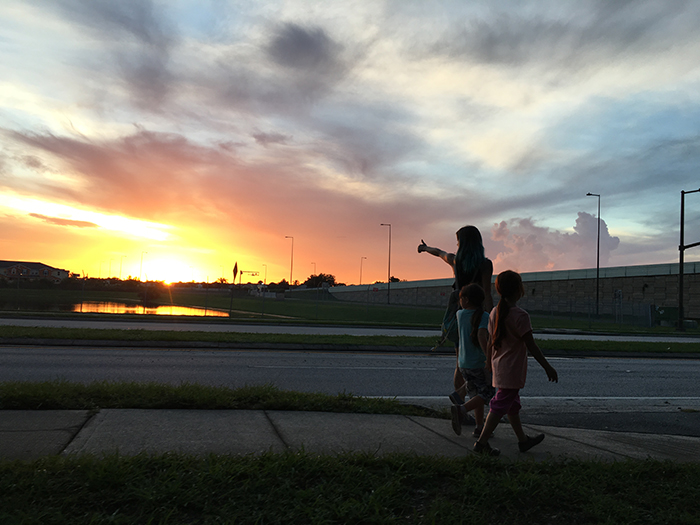
Q: The film has a unique, haunting visual style. Can you talk about what inspired the look and how the film was shot to enhance that?
Laura Mulleavy : Our amazing production designer, K.K. Barrett, is so creative and inspiring to work with. We are very sensitive to color and environment, and these are things that K.K. is also very perceptive to. We wanted the film to feel like a watercolor painting. He helped to create a subjective world for Theresa by allowing the production design to be a reflection of her innermost psychological experience.
Kate Mulleavy : We always talked about how nature is constantly invading Theresa’s world, whether it’s the California poppies in the bathtub or something as subtle as floral wallpaper in her bedroom. He understood our vision and was committed to capturing Theresa’s connection to the natural landscape around her.
Laura Mulleavy : Theresa’s house needed to seem timeless. One of the first questions we asked ourselves was how much technology we were going to see in the film. We cut it all out except for very minimal things, for example, Theresa’s bedside digital clock. All of these details help to dislocate the viewer from a specific time and place. KK helped to create a dreamscape for Theresa to come to life in. From the beginning, we met with our director of photography, Peter Flinckenberg, every day, and spoke about how we needed to approach each scene as if it were the defining moment of the film. We wanted the shots and the look to be completely unique to our film, and to feel like a painting. Theresa’s journey is very subjective — like a stream of conscious water color — and the visual style needed to carry a viewer through it, just as Theresa physically and emotionally walks the audience through the narrative. It was a huge challenge to make something that feels new to the viewer. This was extremely important in order to create Theresa’s world — a world that the viewer could get lost in.
Kate Mulleavy : The aesthetics of the film are a representation of Theresa’s innermost thoughts. We often say that the film footage and double exposures made on film are a window to her soul. We chose film for these shots because it is tactical and emotional in a way that is almost impossible to explain. Film feels like memory — imperfect, subjective, textured and emotional. Shooting digitally allowed us a lot of freedom with the actors and there were logistical benefits to shooting the night redwood forest sequences in this manner. The digital footage ended up being just as emotional and painterly in that no matter the technique of shooting, we were careful to frame each shot so that they were a reflection of Theresa’s psychological experience. Almost everything in this film was shot in camera. Even the opening title sequence was shot in camera. For the levitation sequences, Kirsten was lifted and dropped on wires from the canopies of the redwoods — the crane lifted her 50 feet in the air. It was psychically grueling and extremely difficult.
Laura Mulleavy : The hardest challenge was to present the woods in the right way. It is very difficult to capture their magnitude. We shot with anamorphic lenses, because we wanted the landscape to feel completely massive and as if it could swallow Theresa at any moment. We realized that in order to truly portray the magnitude of the landscape and the forest, we had to recognize that the landscape is an emotional space, as well as, a physical space. Peter was such an essential partner in making this film come to life. He was completely sensitive to Theresa and what she would be aware of, and what she would ignore. We worked tirelessly on each moment in this film, but we were also pushing each other to be open to spontaneity and to the beauty of the unwritten moment. Peter was an amazing conduit through which we could explore Theresa’s mindscape and innermost landscape. It was for this reason that some of this film was shot on film and some of it was done digitally. The film footage acts as a diary for Theresa and serves as a way for her to communicate directly with the audience.
Kate Mulleavy : We wanted to create a visual experience that would leave a person somewhat disoriented, like a dreamscape. One of the ways we did that was by shooting many of the sequences in reflections or through obstructions. When things are off slightly, it is subtly disorienting, rather than being aggressively so. This creates a subliminal tension for the viewer.
Q: Peter Raeburn, whose music has been featured in films including Under the Skin, Breaking the Waves and Sexy Beast composed the score. How did he get involved and what were your initial thoughts on what you wanted the score to sound like?
Laura Mulleavy : Our music supervisor, Linda Cohen, suggested we meet him and we immediately saw that he would be another best friend. There was no music that felt right to us. We had to find a sound of its own for the film, just like the imagery is all its own. We talked with Peter in depth about how to convey the idea of a singular subjective journey through music. We wanted to isolate a sound that would be most like Theresa and he suggested the harp. We knew that the harp would provide a perfect counterpoint to a birdcall that we recorded in the redwoods, a sound we manipulated and used throughout as part of the score and the sound design. At that point, the score started enriching her story. If you take the time to listen, it’s telling you so much about Theresa.
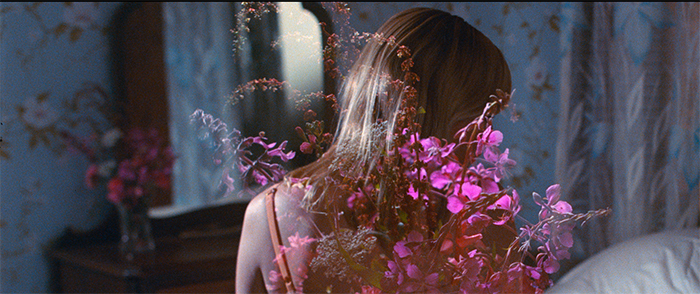
Q: In what ways does your connection to the natural world inform the film?
Kate Mulleavy : Growing up there amongst those trees altered the course of my life. It has made me so sensitive to what surrounds me and I think the same is true for Laura. Human beings are trying to distance themselves more and more from the natural world. We’re more interested in making interactive computer forest spaces than real forests. I’m not saying that’s good or bad, because I’m certainly a part of that. But Theresa, for me, is teaching us that we are interconnected with each other and the natural world… that we cannot disengage.
Q: What are your overall thoughts thus far on the process of bringing Woodshock to light?
Laura Mulleavy : We came into it from another world, but with true love for the art form. What was so great was how natural it felt and that makes me want to go further. I would love it if people watched this film and wanted to go see it again. I think the visuals are extremely beautiful, but they’re also contrasted with destruction. We explored the idea of the sublime with this film — and the emotion behind that.
Kate Mulleavy : The whole film is about a curiosity of the mind. How do our minds work? Why are we the way we are?
Laura Mulleavy : Our creative process, no matter how we express it, will always be personal. Whether we are using something from our lives or from our imaginations, it’s rooted in our deepest curiosities, the things we’re thinking about or questioning. Our creative process is somehow trying to flush those out, not always giving us any answers, but at least leading us to the next thing.
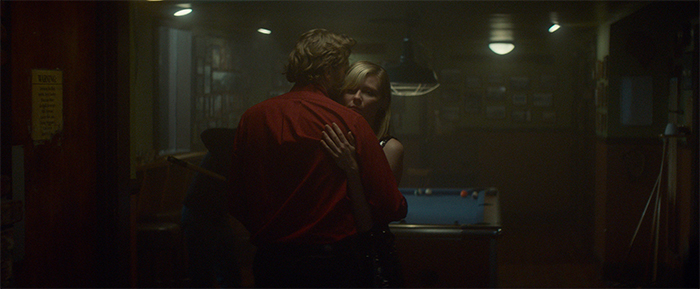
Synopsis:
Theresa (Kirsten Dunst), a woman in the wake of profound loss, is torn between her fractured emotional state and the reality-altering effects of a potent cannabinoid drug.
Woodshock
Directed by Kate Mulleavy, Laura Mulleavy
Produced by Michael Costigan, Ken Kao, Ben LeClair, K.K. Barrett
Written by Kate Mulleavy, Laura Mulleavy
Starring Kirsten Dunst, Joe Cole, Pilou Asbæk
Music by Peter Raeburn
Cinematography : Peter Flickenberg
Edited by Dino Jonsater
Production company : Waypoint Entertainment, COTA Films, Bloom
Distributed by A24
Release date : 22 September 2017 (United States)
Running time : 100 minutes
(Source: press release)

